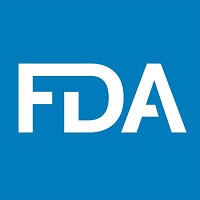 Here’s Why That’s Good for Innovation and Improving Health
Here’s Why That’s Good for Innovation and Improving Health
By Christopher Leptak, M.D., Ph.D., Director, Office of New Drug’s Regulatory Science Program in the FDA’s Center for Drug Evaluation & Research
Twitter: @US_FDA
To be most effective, electronic health records (EHRs) use a systematized and standardized nomenclature for the hundreds of thousands of clinical terms that characterize patient care. This helps to ensure consistency from EHR to EHR and allows these records to be usable from healthcare entity to health care entity, a concept known as interoperability. This nomenclature, used by both industry and the federal government, is called SNOMED CT.
Recognizing the value of such a comprehensive and standard clinical healthcare terminology, the FDA is also embracing the use of SNOMED CT to characterize disease names for its drug development pipeline and for FDA-approved products. The forms drug developers submit in their product applications now request use of this nomenclature. Forms for Investigational New Drugs (INDs) (FDA Form 1571) and New Drug Applications (NDAs), Biologic License Applications (BLAs) and Abbreviated New Drug Applications (ANDAs) (FDA Form 356h) have been revised to request additional supplemental systematized information using the SNOMED CT nomenclature to state for what disease or diseases the drug in the application is indicated.
Here’s why the new nomenclature is good for innovation and improved health: By clearly identifying the intended uses or indications for a potential new drug, SNOMED CT enabled metrics will better inform review activities and aid in consistency in the FDA advice for applications with similar indications. Newly systematized indication information will allow the FDA to better identify areas of unmet medical need for future drug development. This information will also help inform policy development, and with it, allow FDA to become more proactive about developing guidances and gathering public feedback. Additionally, using SNOMED CT will make it possible for the FDA to link its internal data with other data sources coded to SNOMED CT (e.g., EHRs).
To help industry understand what to do, we just released an online tutorial for industry explaining the newly revised forms in detail.
We look forward to working closely with industry to make sure applicants understand the revised forms and how to fill them out. We encourage industry to watch the tutorial, learn the coding system, and partner with the FDA on improving public health.
This article was originally published on FDA Voice and is reprinted here with permission.
